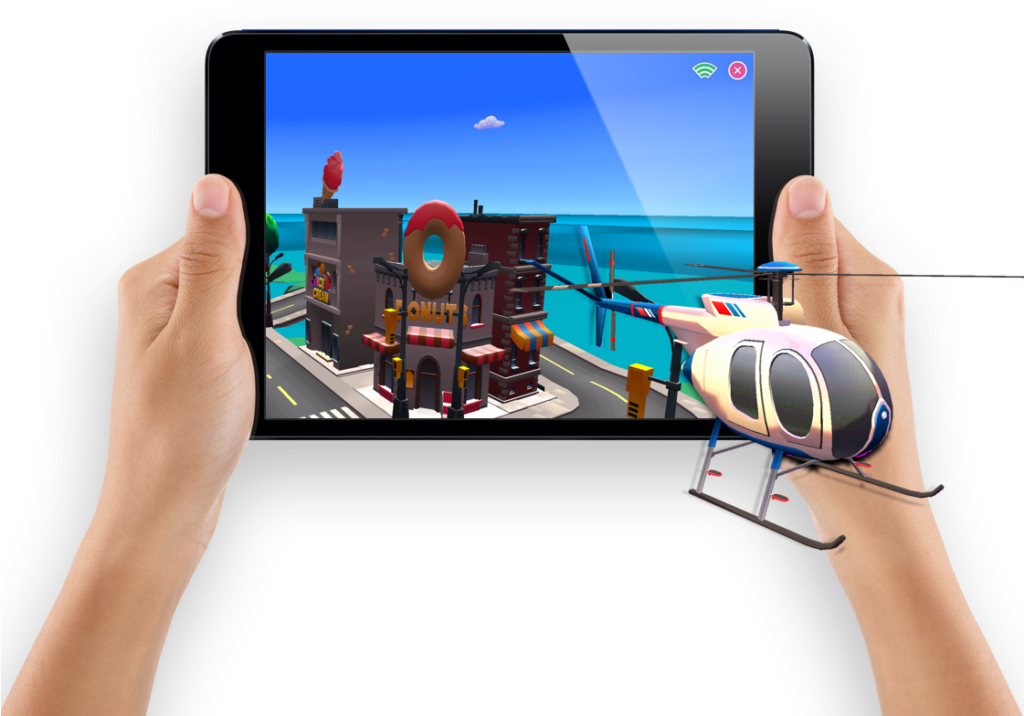Augmented Reality (AR) is an innovative technology that offers educators and students an immersive, interactive learning experience. Studies show that when implemented properly, AR/VR can dramatically improve educational outcomes in core content areas and future-ready initiatives. Most AR/VR solutions are not designed for the educational market, so while they may provide a few really great experiences, it’s hard to integrate them into the curriculum. As an educator, I am constantly searching for new ways to engage students and enhance their learning experience, and AR offers exciting possibilities. Although there are still limitations and challenges to overcome, there are already several AR products and programs available that are pushing the boundaries of AR in the classroom.
What Augment Reality Products Are Made For Education?
One such product is Kai’s Clan, a platform that combines AR, coding, and robotics to create a unique learning experience. Students work in teams to program and control robots using AR markers, allowing them to explore virtual worlds and complete challenges. This platform is designed to teach computational thinking, problem-solving, and teamwork skills in a fun and engaging way. The robots themselves are customizable, allowing students to experiment with different designs and sensors to create their own unique creations.


By integrating tools such as Minecraft and Tinkercad with Kai’s Clan, students can create their own unique robot avatars. Additionally, the integrated AR and virtual viewer allows students to be completely immersed in various environments from Mars to an Amazon Warehouse.
Merge is another company that offers AR products for the classroom, including their Merge Cube. The Merge Cube is a small foam cube that, when viewed through a smartphone or tablet, transforms into a variety of interactive virtual objects. Students can explore everything from the human body to space exploration, and the cube can be used in a variety of subjects from science to history. Merge also offers a range of other AR products, including headsets and apps, that can be used to create immersive learning experiences.
Merge offers a unique solution for AR that is built specifically for K-12 learning and is aligned with the Next Generation Science Standards (NGSS), the ISTE Standards for Students, and individual state science standards for all 50 US states. One distinctive feature of Merge’s approach to AR is its ability to allow students to touch virtual objects, bringing a hands-on aspect to a digital experience. Merge also provides activity plans and STEM projects in Merge EDU, which are designed to be teacher-led or student-led.
From funny filters to the metaverse, immersive technologies are becoming more and more popular and related STEM careers are in high demand. To ensure that students are prepared for a fast-paced future, the Career STEM Explorer platform focuses on giving teachers and students the information they need all in one location. The Career in STEM platform provides students with an inside look at a variety of STEM careers. Students can explore virtual job sites, have insight into the interaction with necessary equipment and machinery, and have the opportunity to hear from professionals in the field. The platform is designed to help students make informed decisions about their career paths and to inspire them to pursue STEM subjects in school. By using Career in STEM, students can learn about a wide range of STEM careers and gain a better understanding of the skills and knowledge required to succeed in these fields. Be sure to check out the FREE TRIAL to learn more.
Another program that is using AR to enhance STEM learning is Zspace. zSpace applications engage students in standards-based learning experiences that align with the curriculum. Students construct knowledge and understanding of concepts across multiple curriculum areas with a strong focus on STEM subjects. Students learn by asking questions, gathering information, developing models, testing ideas, analyzing data, and developing conclusions. Teachers facilitate learning by setting up tools and resources that help students through the lesson. Zspace offers a range of AR and VR tools, including interactive anatomy models, physics simulations, and engineering challenges. Students can use the tools to explore complex concepts in a hands-on way, making learning more engaging and memorable.
These are just a few examples of the many AR products and programs currently available for educators. While there is still a long way to go in terms of developing high-quality AR resources for the classroom, the potential is clearly there. AR enhances learning with spatial and hands-on interactions. AR has the ability to make learning more interactive, engaging, and fun, and to provide students with experiences that were previously impossible. As educators, it is our job to explore these technologies and to find new and innovative ways to incorporate them into our classrooms.
Of course, like any new technology, there are also challenges and concerns associated with AR. One of the biggest challenges is the cost of the technology. While some products, like Merge Cube, are relatively affordable, others, like high-end AR headsets, can be prohibitively expensive for many schools and districts. This can create a significant equity issue, as some students may have access to these technologies at home while others do not.
Another concern is the impact of AR on socialization and creativity. Critics argue that AR can lead to a more isolated and passive form of learning and that it may limit students’ ability to use their imaginations and creativity. These concerns are valid, and it is important for educators to carefully consider these issues as they explore the use of AR in the classroom.



